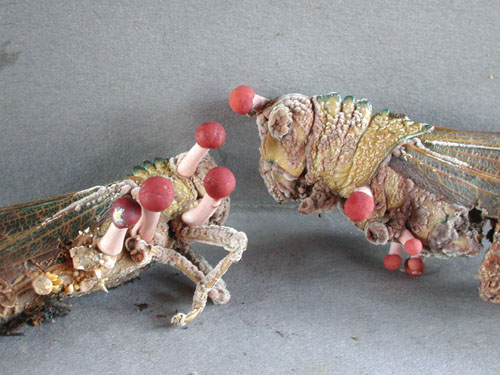- May 11, 2008
- 22,332
- 1,435
- 126
Bacteria that can transport electrons over "vast" distances.
It seems i am experiencing the vast range of symptoms of the current flu epidemic.
For now, this is all the commenting i can provide for i feel largely depleted of energy.
http://www.nature.com/nature/journal/v491/n7423/fig_tab/nature11586_F1.html

http://en.wikipedia.org/wiki/Desulfobulbaceae
http://www.wired.com/wiredscience/2012/10/bacteria-electric-wires
http://www.wired.com/wiredscience/2010/02/electric-ocean-bacteria/
It seems i am experiencing the vast range of symptoms of the current flu epidemic.
For now, this is all the commenting i can provide for i feel largely depleted of energy.
http://www.nature.com/nature/journal/v491/n7423/fig_tab/nature11586_F1.html

http://en.wikipedia.org/wiki/Desulfobulbaceae
The discovery of filamentous Desulfobulbaceae in 2012 elucidates the cause of the small electrical currents in the top layer of sediment on large portions of the ocean floor. The currents were first measured in 2010. Thousands of these currently unnamed Desulfobulbus cells are arranged in fibrous microorganisms up to a centimeter in length. They transport electrons from the sediment that is rich in hydrogen sulfide up to the oxygen-rich sediment that is in contact with the water.
http://www.wired.com/wiredscience/2012/10/bacteria-electric-wires
The world's deep seafloors are dark and airless places, but vast swaths may pulse gently with energy conducted through a type of newly discovered bacteria that forms living electrical cables.
The bacteria were first detected in 2010 by researchers perplexed at chemical fluctuations in sediments from the bottom of Aarhus Bay in Denmark. Almost instantaneously linking changing oxygen levels in water with reactions in mud nearly an inch below, the fluctuations occurred too fast to be explained by chemistry.
Only an electrical signal made sense -- but no known bacteria could transmit electricity across such comparatively vast distances. Were bacteria the size of humans, the signals would be making a journey 12 miles long.
Now the mysterious bacteria have been identified. They belong to a microbial family called Desulfobulbaceae, though they share just 92 percent of their genes with any previously known member of that family. They deserve to be considered a new genus, the study of which could open a new scientific frontier for understanding the interface of biology, geology and chemistry across the undersea world.
The bacteria are described Oct. 24 in Nature by researchers led by microbiologists Christian Pfeffer, Nils Risgaard-Petersen and Lars Peter Nielsen of Aarhus University. On the following pages, Wired takes a look at these marvelous microbes.
Seen through an electron microscope, the Desulfobulbaceae -- the researchers haven't yet given them a genus or species name -- appear in blue. They link end-to-end, forming filaments nearly an inch in length.
http://www.wired.com/wiredscience/2010/02/electric-ocean-bacteria/
According to findings that could have been pulled from a deep-sea sequel to Avatar, bacteria appear to conduct electrical currents across the ocean floor, driving linked chemical reactions at relatively vast distances.
Noticed only when reseachers happened to test sediment leftovers from another experiment, the phenomenon may add a new mechanism to Earth’s biogeochemistry.
“The cycling of elements and life at the bottom of the sea, and in soil, and anywhere else you’re short of oxygen — this could help us understand those processes,” said microbiologist Lars Peter Nielsen of Denmark’s Aarhus University, co-author of the study, published Feb. 24 in Nature.
The original focus of Nielsen’s team wasn’t seafloor conductivity, but an especially interesting species of sulfur bacteria found on the floor of Aarhus Bay. To help quantify their chemical activity, the researchers kept a few beakers of seawater and sulfur bacteria-free sediment for comparison.
After those experiments ended, the beakers were almost forgotten. Then, a few weeks later, the researchers noticed strange patterns of activity. Changing oxygen levels in water above the top sediment layer were almost immediately followed by chemical fluctuations several layers down. The distance was so great, and the response time so quick, that usual methods of chemical transport — molecular diffusion, or a slow drift from high to low concentration — couldn’t explain it.
At first, the researchers were stumped. Then they realized the process made sense if bacteria in the top and bottom layers were linked. Anything that affected oxygen-processing bacteria up top would also affect the sulfide-eating microbes below. It would explain the apparent connection; and an electrical linkage would explain the speed. It would also boggle the mind.
“Such hypotheses would at one time have been considered heretical,” wrote Kenneth Nealson, a University of Southern California microbiologist, in an accompanying commentary in Nature. A half-inch gap “doesn’t seem like much of a distance. But to a bacterium it amounts to 10,000 body lengths, equivalent to about 20 kilometers (12 miles) in human terms.”
In recent years, however, scientists have found species of microbes with outer membranes covered by electron-transporting enzymes, or studded with conductive, micrometer-scale filaments. These are used in driving experimental microbial fuel cells, and are known to be found in the Aarhus Bay mud. Those sediments also contain trace amounts of pyrite, an electrically conductive mineral.
The top sediment layer also had a low concentration of hydrogen ions, something that could only be explained through an electrochemical reaction, with electrons conducted from a distance, said Nielsen.
Nealson called the findings “astonishing,” and said they “may be relevant to energy transfer and electron flow through many different environments.” They could eventually applied to bacteria-based schemes for bioremediation, carbon sequestration and energy production.
Asked if he’d seen the blockbuster movie Avatar, with its storyline involving electrochemically linked forests that stored the inhabitants’ souls in a planet-spanning biological computer, Nielsen said, “One of my colleagues saw this, and immediately sent me a message: ‘You’ve discovered the secret of Avatar! Go see it!’ The similarities are quite striking.”
He continued, “I don’t think there is much spirit in the networks we’ve seen here. It might be only about energy. But there are connections.”









